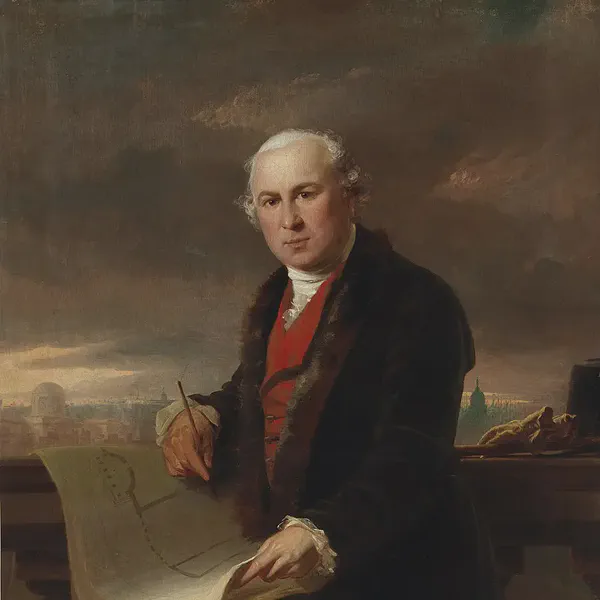On August 08, 1781 in Celtic History
James gandon moves from london to dublin; the first stone of his customs house is laid on this date

James Gandon, one of the most renowned architects of his time, moved from London to Dublin in 1781. On August 9, 1781, the first stone of his most famous work, the Custom House in Dublin, was laid. This event marked the beginning of the construction of one of Dublin’s most iconic buildings and a significant moment in the city’s architectural history.
Background
- James Gandon: Born in London in 1743, James Gandon was an accomplished architect who had trained under the prominent architect Sir William Chambers. Gandon made a name for himself with several prestigious projects in England before being invited to Ireland to undertake major public works in Dublin.
- Invitation to Dublin: Gandon was invited to Dublin by John Beresford, the First Commissioner of Revenue in Ireland, who sought to modernize the city and create grand public buildings that would reflect Dublin’s status as one of the leading cities of the British Empire. Gandon accepted the commission to design and oversee the construction of the Custom House, which would become one of his most significant works.
The Custom House
- Design and Construction: The Custom House was designed to serve as the administrative center for customs and excise duties in Dublin, handling the collection of taxes on goods imported into and exported from Ireland. Gandon’s design for the Custom House was neoclassical, characterized by its symmetry, grandeur, and use of classical elements such as columns, pediments, and domes.
- Laying of the First Stone: The first stone of the Custom House was laid on August 9, 1781, marking the official start of the construction process. The laying of the foundation stone was a significant ceremonial event, attended by dignitaries and reflecting the importance of the project.
- Completion: The Custom House was completed in 1791, after a decade of construction. The building featured a central dome topped with a statue of Commerce, and its facades were adorned with intricate sculptures representing Ireland’s rivers and other symbolic figures.
Impact and Legacy
- Architectural Significance: The Custom House is widely regarded as one of the finest examples of neoclassical architecture in Ireland and a masterpiece of James Gandon’s career. Its design set new standards for public buildings in Dublin and influenced the development of other neoclassical structures in the city.
- Symbol of British Rule: While the Custom House was celebrated for its architectural beauty, it was also a symbol of British authority in Ireland, representing the control of commerce and revenue. This dual significance made the building a focal point of both admiration and resentment in Irish history.
- Historical Events: The Custom House has played a central role in Dublin’s history. Notably, during the Irish War of Independence in 1921, the building was set on fire by the Irish Republican Army (IRA) as a symbolic attack on British rule. The fire caused extensive damage to the interior, but the exterior was largely preserved. The building was later restored and continues to serve as a government office.
James Gandon’s move to Dublin and the laying of the first stone of the Custom House in 1781 marked the beginning of a new era in Irish architecture. The Custom House remains a key landmark in Dublin, symbolizing both the city’s rich architectural heritage and its complex history. Gandon’s work on the Custom House solidified his reputation as one of the leading architects of his time, leaving a lasting legacy in Ireland.
More From This Day

Thomas McElwee, Irish polictical prisoner, dies on hunger strike in Maze prison, Northern Ireland.
August 08, 1981




King Edward I removed to England the Stone of Destiny on which generations of Scottish kings had been crowned.
August 08, 1296